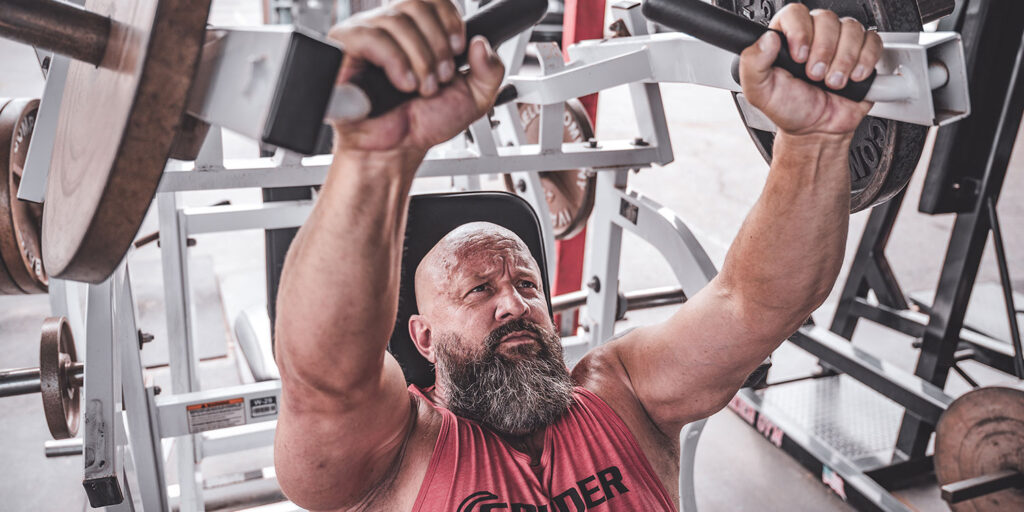
Reverse Pyramid Training (RPT) is a strength and hypertrophy training system that involves performing the heaviest set first and progressively reducing the weight with each subsequent set while increasing the number of repetitions. This approach contrasts with traditional pyramid training, where the weight increases and repetitions decrease with each set.
This guide aims to provide a comprehensive review of Reverse Pyramid Training, detailing its principles, structure, benefits, and practical applications. Readers will gain an understanding of RPT and learn how to effectively implement it into their fitness routines.
Understanding Reverse Pyramid Training
Definition and Scope:
- Definition: Reverse Pyramid Training is a method where the trainee starts with their heaviest set first when they are freshest, then reduces the weight and increases the repetitions in subsequent sets.
- Scope: Primarily used for strength and hypertrophy, it can be adapted for different fitness levels and goals.
Benefits of Using Reverse Pyramid Training:
- Maximizes performance on the heaviest set due to starting fresh.
- Efficient and time-saving, typically involving fewer sets than traditional pyramid training.
- Effective for building strength and muscle mass due to high initial intensity.
Categories of Training Systems
Strength Training Systems:
- RPT is often used for strength gains due to its emphasis on heavy initial sets.
Hypertrophy Training Systems:
- RPT is also effective for muscle growth, combining heavy lifting with higher-rep sets for hypertrophy.
Endurance, Flexibility, Mobility, and Sport-Specific Training Systems:
- RPT is less commonly used in these categories but can be adapted for sport-specific strength and hypertrophy needs.
Origin and History
Reverse Pyramid Training (RPT) has gained popularity in the fitness community for its efficiency and effectiveness in building strength and muscle. It emerged as a refined version of traditional pyramid training, with the primary principle being to start with the heaviest set when the muscles are freshest. This method has roots in bodybuilding and strength training, and its popularity has surged due to its time-efficient nature and proven results.
Core Principles and Philosophy
- Start with the heaviest set first when the muscles are freshest.
- Gradually decrease the weight while increasing the number of repetitions for subsequent sets.
- Focus on maximal effort and intensity in the initial set.
Program Structure and Phases
- Typically involves 3-4 sets per exercise.
- The first set is performed with a weight that allows for 4-6 reps, the second set with a lighter weight for 6-8 reps, and the third set with an even lighter weight for 8-10 reps.
- Can include phases of hypertrophy and strength focus, adjusted based on goals.
Key Exercises and Techniques
- Compound movements such as squats, deadlifts, bench presses, and rows.
- Emphasis on proper form and technique due to the heavy initial sets.
Typical Training Schedule
- Example Weekly Schedule:
- Day 1: Upper Body (Bench Press, Rows)
- Day 2: Lower Body (Squats, Deadlifts)
- Day 3: Rest or Active Recovery
- Day 4: Upper Body (Overhead Press, Pull-Ups)
- Day 5: Lower Body (Leg Press, Romanian Deadlift)
- Day 6-7: Rest or Light Cardio
Progression and Periodization
- Gradual increase in the initial set’s weight as strength improves.
- Periodic deload weeks to prevent overtraining.
- Adjusting volume and intensity based on individual progress and goals.
Benefits and Drawbacks
- Benefits:
- Maximizes strength and hypertrophy.
- Efficient and time-effective.
- Focuses on high-quality, intense training.
- Drawbacks:
- Can be demanding on the central nervous system.
- Requires careful weight selection to avoid injury.
Who It’s Best For
- Ideal for intermediate to advanced lifters with experience in heavy lifting.
- Individuals looking to maximize strength and muscle growth in a time-efficient manner.
Common Mistakes and How to Avoid Them
- Starting too heavy: Begin with a manageable weight to avoid injury.
- Poor form: Prioritize technique, especially on heavy initial sets.
- Inadequate recovery: Ensure sufficient rest between sessions.
Supplementary Components
Nutrition and Supplementation:
- High-protein diet to support muscle repair and growth.
- Supplements like creatine, BCAAs, and pre-workout formulas can enhance performance and recovery.
Recovery and Injury Prevention:
- Adequate sleep, hydration, and active recovery strategies.
- Regular mobility work and stretching to maintain joint health.
Mindset and Motivation:
- Focus on progressive overload and consistent improvement.
- Setting short-term and long-term goals to stay motivated.
Tracking Progress and Adjustments:
- Keep a training log to track weights, sets, and reps.
- Adjust the program based on performance and recovery feedback.
Comparative Analysis
Comparing Different Training Systems:
- RPT vs. Traditional Pyramid Training: RPT starts heavy and goes lighter, while traditional pyramid does the opposite.
- RPT vs. Linear Periodization: RPT focuses on heavy initial sets every workout, while linear periodization gradually increases intensity over time.
Choosing the Right Training System:
- Consider goals, experience level, and personal preferences.
- RPT is ideal for those with a focus on strength and hypertrophy with a preference for intense, efficient workouts.
Recommended Articles:
Articles and workouts coming soon…
Conclusion
Reverse Pyramid Training offers an efficient and effective approach to building strength and muscle. By starting with the heaviest sets first, lifters can take advantage of their peak strength, leading to significant gains. With proper technique, progression, and recovery, RPT can be a powerful addition to any training regimen.


